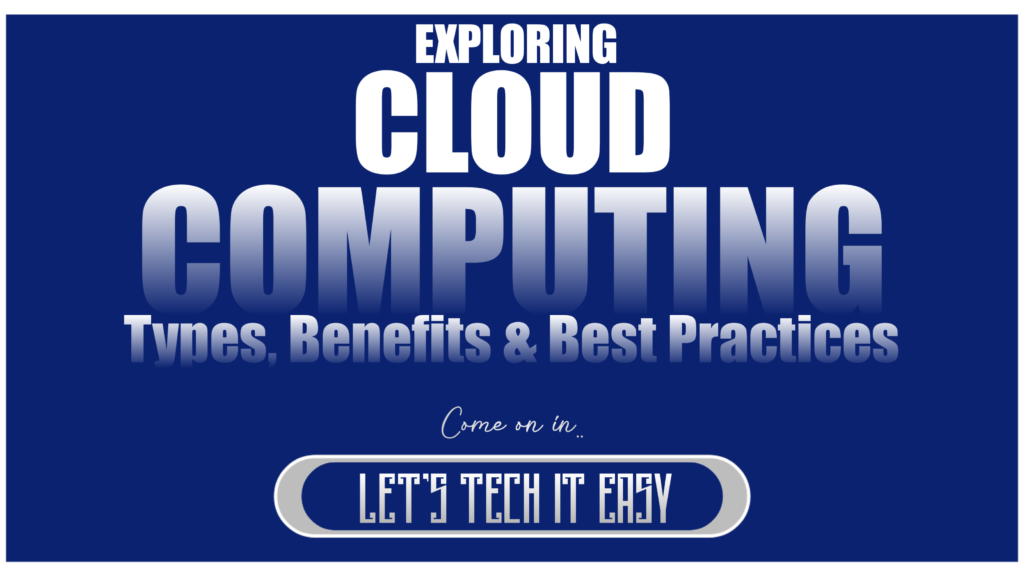In today’s digital age, cloud computing has emerged as a transformative technology that revolutionizes the way businesses and organizations operate. With its ability to provide on-demand access to computing resources, scalability, and cost-efficiency, cloud computing has become an integral part of the modern IT landscape. In this blog, we will delve into the world of cloud computing, exploring its types, benefits, and best practices for successful implementation.
Understanding Cloud Computing:
Cloud computing refers to the delivery of computing services over the internet, enabling users to access and utilize a shared pool of resources, including servers, storage, databases, and software applications. It offers several key characteristics, including:
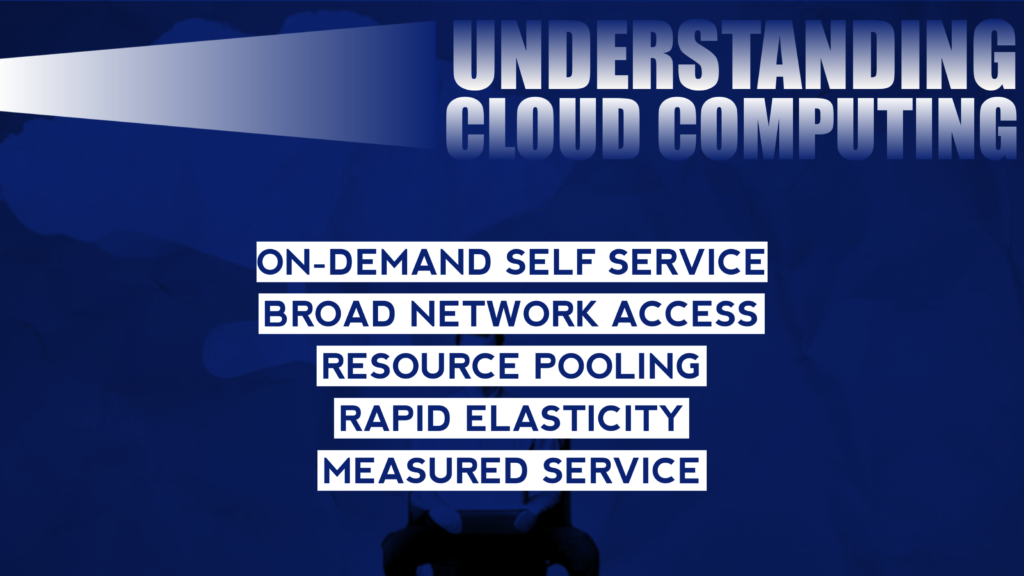
- On-demand self-service: Users can provision computing resources, such as virtual machines or storage, as needed without requiring human intervention from the service provider.
- Broad network access: Cloud services are accessible over the internet from various devices, allowing users to access their applications and data from anywhere, at any time.
- Resource pooling: Computing resources are shared among multiple users, allowing for efficient utilisation and cost optimisation.
- Rapid elasticity: Cloud resources can be scaled up or down quickly and easily to accommodate changing demands, ensuring flexibility and agility.
- Measured service: Cloud providers monitor resource usage, allowing users to be billed based on their actual consumption.
Types of Cloud Computing:
Cloud computing can be categorized into three main types:
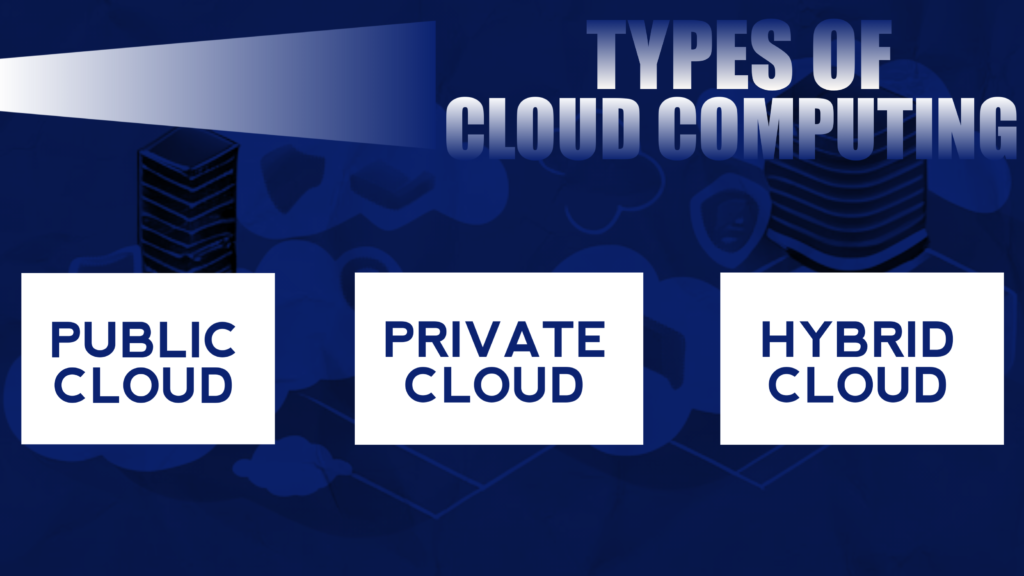
- Public Cloud: Public cloud services are provided by third-party service providers over the internet. These services are available to the general public and can be accessed by multiple organizations or individuals. Public clouds offer scalability, cost-effectiveness, and ease of use.
- Private Cloud: Private clouds are dedicated to a single organization and are either located on-premises or hosted by a third-party provider. Private clouds offer greater control, security, and customization options, making them suitable for organizations with specific compliance or security requirements.
- Hybrid Cloud: Hybrid clouds combine the use of public and private clouds, allowing organizations to take advantage of the benefits of both. This hybrid approach offers flexibility, enabling organizations to leverage public cloud resources for scalability while maintaining sensitive data or critical applications in a private cloud environment.
Benefits of Cloud Computing:
Cloud computing offers numerous benefits to businesses and organisations:

- Cost Savings: Cloud computing eliminates the need for upfront investments in hardware and infrastructure, reducing capital expenses. Organizations can pay for cloud services on a pay-as-you-go basis, optimizing costs based on actual resource usage.
- Scalability and Flexibility: Cloud resources can be quickly scaled up or down to meet changing demands, ensuring that organisations have the necessary computing power and storage capacity when needed. This scalability allows businesses to respond swiftly to market fluctuations and seasonal spikes in demand.
- Enhanced Collaboration: Cloud-based collaboration tools enable teams to work together seamlessly, regardless of their physical locations. Real-time document editing, file sharing, and communication platforms foster collaboration and improve productivity.
- Disaster Recovery: Cloud computing provides built-in redundancy and data replication across multiple locations, ensuring that data is protected and accessible in the event of a disaster. Cloud-based backup and recovery solutions simplify and streamline disaster recovery processes.
Cloud Service Models:
Cloud computing offers three primary service models:
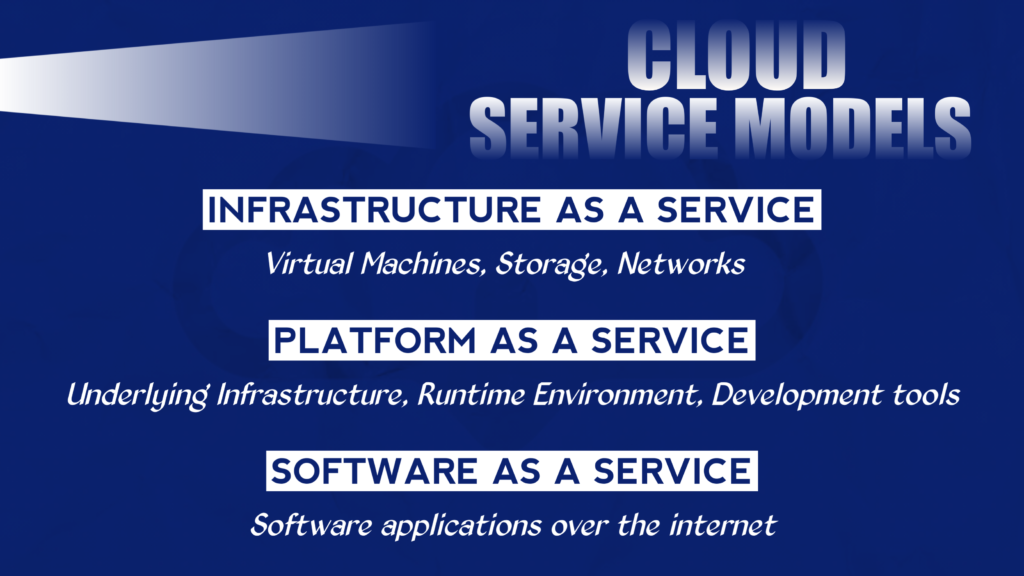
- Infrastructure as a Service (IaaS): IaaS provides virtualised computing resources, such as virtual machines, storage, and networks, over the internet. Organizations can build their own IT infrastructure on top of the provided resources, giving them full control and flexibility.
- Platform as a Service (PaaS): PaaS offers a platform that includes the underlying infrastructure, runtime environment, and development tools. It allows organizations to focus on application development and deployment without the need to manage the underlying infrastructure.
- Software as a Service (SaaS): SaaS provides ready-to-use software applications over the internet, eliminating the need for installation, maintenance, and updates. Users can access these applications through web browsers, enabling instant availability and ease of use.
Cloud Security and Compliance:
Security and compliance are critical considerations when adopting cloud computing. To mitigate risks and ensure data protection, organizations should follow best practices such as:
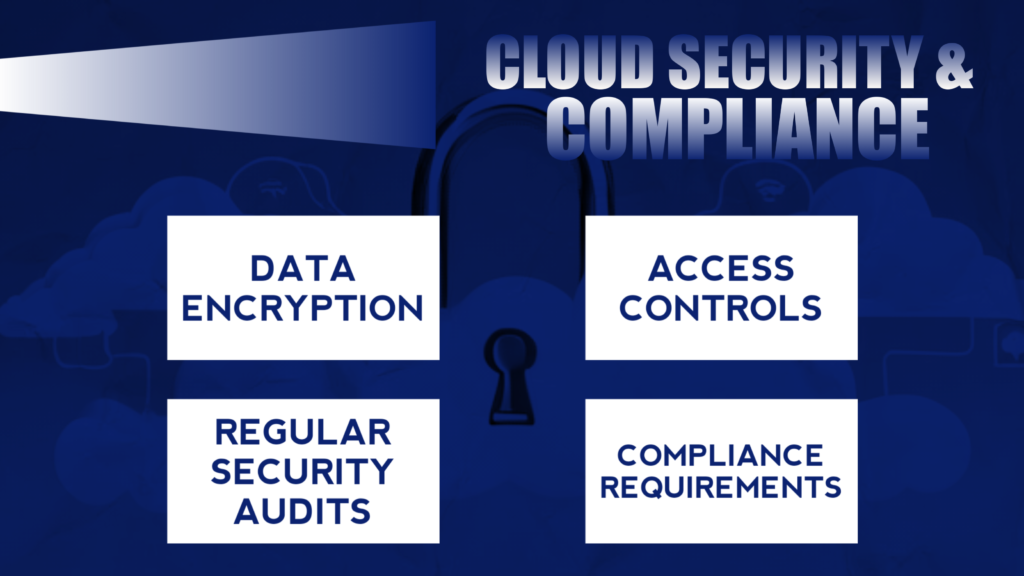
- Data Encryption: Encrypt sensitive data both in transit and at rest to protect it from unauthorized access. Encryption ensures that even if data is intercepted or compromised, it remains unreadable.
- Access Controls: Implement strong access controls and identity management mechanisms to ensure that only authorized individuals can access cloud resources and data.
- Regular Security Audits: Conduct regular security audits to identify vulnerabilities, assess risks, and implement necessary security measures. Regular monitoring and proactive security measures help maintain a secure cloud environment.
- Compliance Considerations: Understand and adhere to industry-specific regulations, such as GDPR (General Data Protection Regulation) and HIPAA (Health Insurance Portability and Accountability Act), when storing and processing sensitive data in the cloud.
Cloud Migration Strategies:
Migrating applicationsand data to the cloud requires careful planning and consideration. Here are some key strategies and best practices to ensure a successful cloud migration:
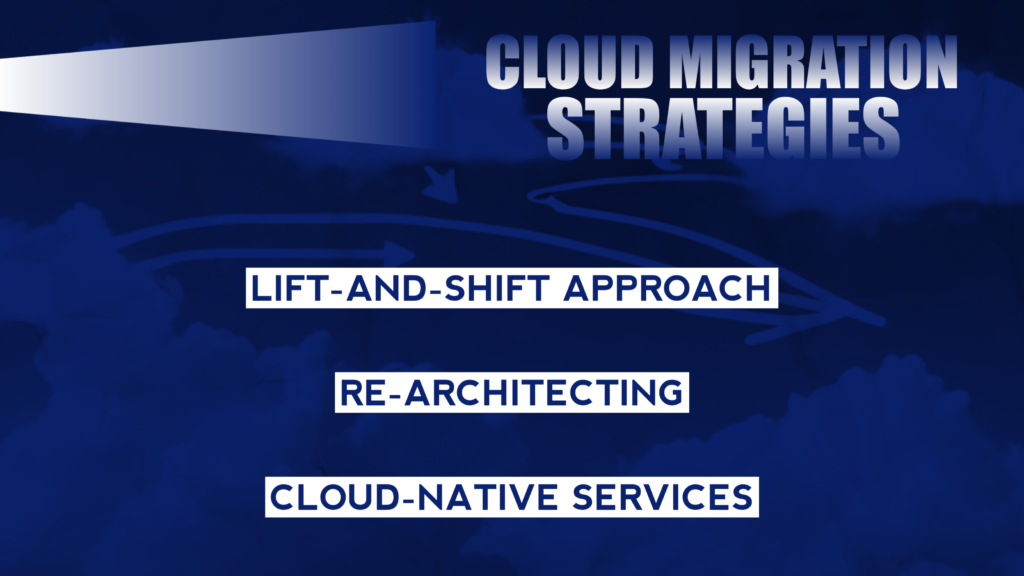
- Lift-and-Shift Approach: This strategy involves moving applications and data to the cloud without making significant changes to the existing architecture. It offers a quick and straightforward migration path, but may not fully leverage cloud-native capabilities.
- Re-architecting: In this strategy, applications are redesigned and optimized for the cloud environment. It involves breaking down monolithic applications into microservices, leveraging cloud-native services, and adopting modern development practices like containers and serverless computing.
- Cloud-Native Services: Instead of migrating existing applications, organizations can opt to build new applications directly on cloud-native services. This approach takes full advantage of the scalability, reliability, and flexibility offered by cloud platforms.
Best Practices for Cloud Computing:
To maximise the benefits of cloud computing, organisations should follow these best practices:
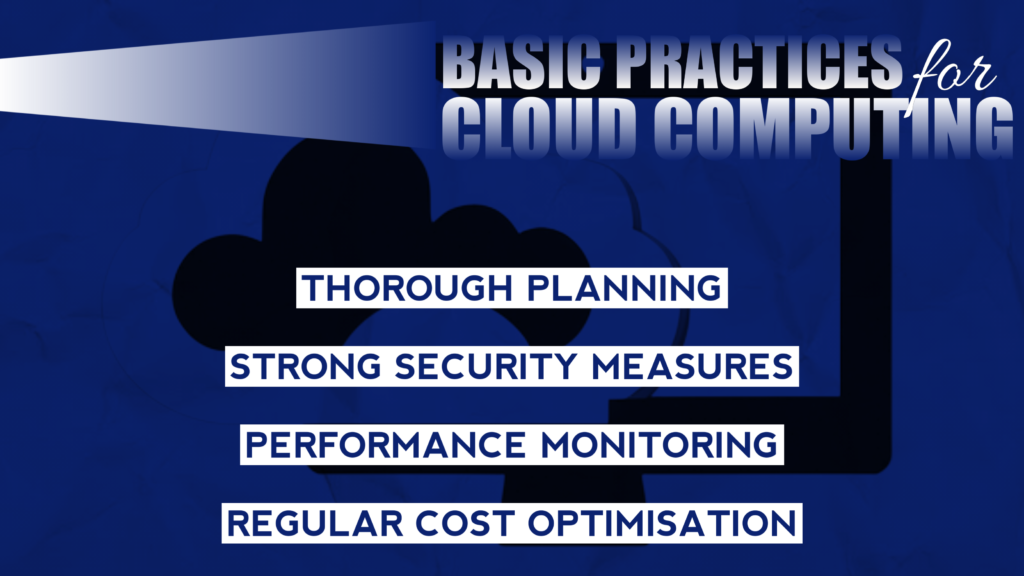
- Thorough Planning: Develop a clear cloud strategy and roadmap, taking into account business objectives, security requirements, and compliance considerations. Plan for scalability, disaster recovery, and cost optimization from the outset.
- Strong Security Measures: Implement robust security measures, including encryption, access controls, and regular security audits. Stay up to date with security best practices and leverage cloud provider security features.
- Performance Monitoring: Establish comprehensive monitoring and alerting mechanisms to track cloud resource usage, identify performance bottlenecks, and ensure optimal application performance. Use cloud monitoring tools and services to gain insights into resource utilisation and application behavior.
- Regular Cost Optimisation: Continuously optimise costs by rightsizing resources, leveraging spot instances or reserved instances for cost savings, and implementing cost monitoring and governance practices. Regularly review and optimize cloud spending to achieve the best return on investment.
Cloud computing has transformed the IT landscape, providing businesses and organizations with unprecedented scalability, flexibility, and cost-efficiency. By understanding the different types of cloud computing, leveraging its benefits, and adopting best practices, organisations can harness the full potential of cloud technology. Whether it’s public, private, or hybrid cloud, organizations should carefully consider their requirements and goals to choose the most suitable cloud approach. By prioritising security, compliance, and performance, organisations can successfully migrate to the cloud and unlock the transformative power of cloud computing.

